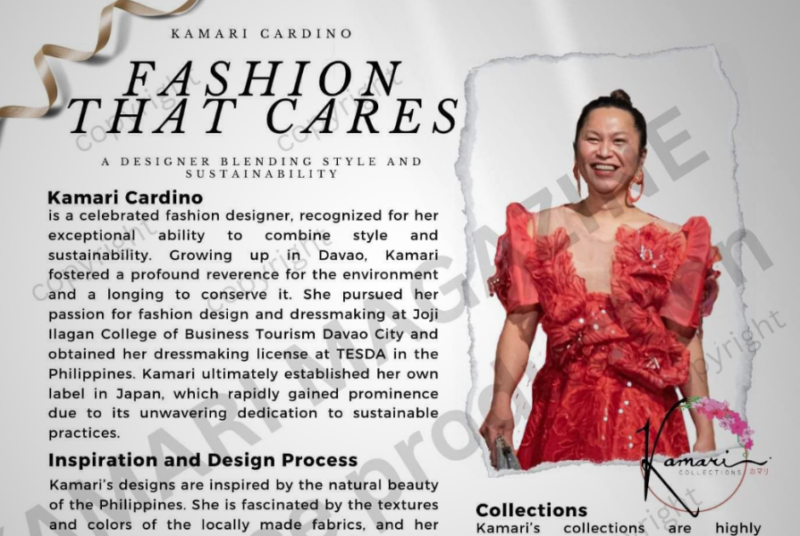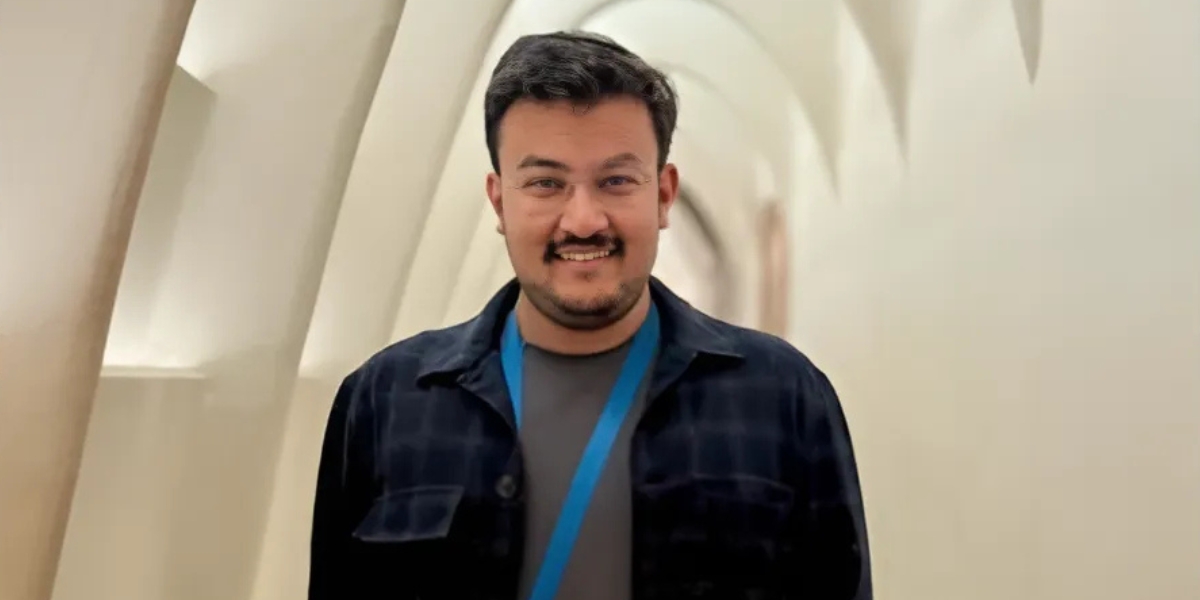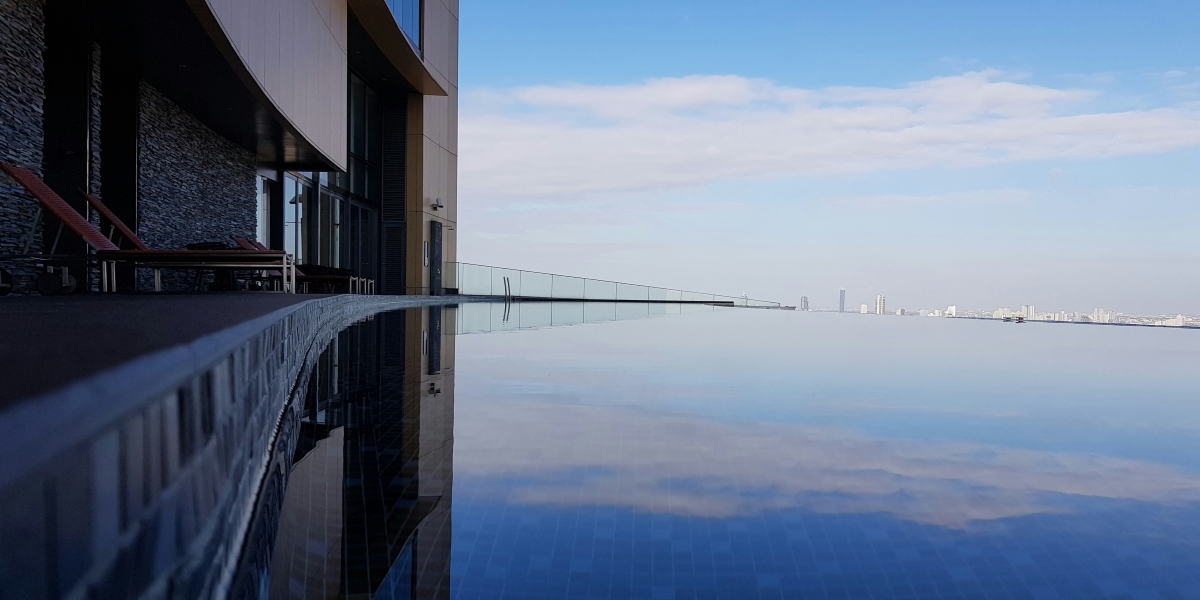By: Alegre De Pilipinas
Kamari Collections Japan made a powerful impression at Paris Fashion Week 2024, marking the brand’s first major international debut. Under the creative leadership of Kamari, a Filipino designer living in Japan, the collection showcased a seamless blend of Filipino heritage with Japanese design elements. This fusion of cultures created a unique fashion statement, capturing the attention of an international audience. Kamari’s work is not just a celebration of tradition but also an exploration of how two distinct cultural influences can merge to create something new and meaningful. Models from around the world graced the runway, wearing designs that represented this cross-cultural fusion, which is at the heart of Kamari Collections Japan.
Kamari’s Creative Vision: Tradition Meets Modernity
At the core of Kamari Collections Japan is a deep connection to cultural storytelling through fashion. For his Paris Fashion Week debut, Kamari reimagined the Maria Clara silhouette, a symbol of Filipino women’s elegance and strength. The Maria Clara is steeped in history, with its roots in the Spanish colonial period of the Philippines. Kamari modernized this traditional garment, paying homage to his heritage while introducing a contemporary twist that would resonate on the global fashion stage.
Kamari’s designs for the event were a testament to his ability to merge old and new. He skillfully incorporated Japanese fabric techniques into the construction of the garments, using rich and bold colors that aligned with Parisian fashion trends. By combining these elements, Kamari created a collection that felt both innovative and respectful of the past.
In reflecting on his design process, Kamari explained, “It was important to me to bring something memorable to Paris Fashion Week. The Maria Clara has such a strong cultural significance for me as a Filipino, but I wanted to reinterpret it using Japanese craftsmanship. I chose heavier colors to reflect the mood of the Paris runway, but the essence of the design is rooted in my Filipino heritage.”
The Artistic Fusion of Filipino and Japanese Elements

Kamari’s decision to blend Filipino and Japanese elements in his collection was not just an aesthetic choice but also a personal journey. Living in Japan has profoundly influenced his approach to design, allowing him to explore a new creative language. This fusion of cultural styles is evident in his work, where the intricate, detailed construction typical of Japanese fashion is combined with the warmth and vibrancy of Filipino traditions.
For this collection, Kamari selected luxurious materials that mirrored the high standards of Japanese fabric quality. These fabrics were then tailored into silhouettes that paid tribute to traditional Filipino attire, creating a harmonious balance between structured forms and flowing lines. This careful interplay of textures, shapes, and colors symbolized the fusion of the two cultures that Kamari holds dear.
Each piece in the collection reflected Kamari’s dedication to craftsmanship and cultural storytelling. By merging these two distinct fashion traditions, he created garments that resonated with a global audience, celebrating both his Filipino roots and the Japanese influences that have shaped his work.
Empowering Filipino Designers: The Role of Alegre de Pilipinas
Kamari’s successful debut at Paris Fashion Week was made possible through the support of Alegre de Pilipinas, an organization dedicated to promoting Filipino talent on the global stage. This collaboration provided Kamari with a platform to share his unique vision with the world, marking an important moment for Filipino fashion as a whole. The partnership between Kamari and Alegre de Pilipinas highlights the power of community and support in elevating underrepresented voices in the fashion industry.
Kamari’s pride in his Filipino identity was evident throughout his collection, and he expressed gratitude for the opportunities provided by organizations like Alegre de Pilipinas. Their encouragement allowed him to present his designs at one of the world’s most prestigious fashion events, showcasing the richness of Filipino craftsmanship and creativity.
The collaboration not only benefited Kamari personally but also served as a beacon for other Filipino designers seeking to make their mark on the international fashion scene. Alegre de Pilipinas continues to play a crucial role in supporting Filipino creatives and pushing their work to new heights, offering a global platform for their talent.
Kamari Collections Japan: A New Perspective on Global Fashion
The debut of Kamari Collections Japan at Paris Fashion Week represents a significant moment in the designer’s career. The global appreciation for his work reflects not only his technical skill but also his ability to tell a story through fashion. Kamari’s designs were celebrated for their innovative approach to cultural fusion, offering a fresh perspective on the relationship between tradition and modernity.
Kamari’s success in Paris marks the beginning of what promises to be an exciting journey for Kamari Collections Japan. His ability to balance heritage with innovation has positioned him as a designer with a unique voice in the international fashion landscape. The collection’s blend of Filipino and Japanese influences speaks to the global nature of fashion today, where cultural boundaries are increasingly blurred, and diverse stories can be told through clothing.
As Kamari’s brand continues to grow, his commitment to cultural storytelling will remain central to his work. The designer’s experiences in both the Philippines and Japan have given him a distinct perspective that sets his work apart. His designs reflect the complexities of cultural identity in the modern world, offering a unique narrative that resonates with audiences around the globe.
Fashion as a Cultural Bridge
Kamari’s work is a powerful example of how fashion can serve as a bridge between cultures. His designs are not just garments but representations of his journey as a Filipino designer living and working in Japan. Through his collection, he honors the traditions of his heritage while embracing the influences of his current environment, creating a body of work that speaks to the universality of cultural exchange.
The fusion of Filipino and Japanese elements in Kamari’s designs reflects a larger trend in the fashion industry, where designers are increasingly drawing inspiration from diverse cultural sources. Kamari’s collection is a testament to the possibilities that arise when designers embrace their personal histories and use them to create something new and exciting.
By presenting his collection at Paris Fashion Week, Kamari has positioned himself as a global designer with a deep appreciation for the power of cultural fusion. His work serves as a reminder that fashion is not just about aesthetics but also about storytelling, identity, and connection.
Kamari’s Future in the Fashion Industry
Following his successful debut at Paris Fashion Week, Kamari is poised to continue making waves in the fashion industry. His unique approach to design, which combines cultural elements with modern aesthetics, has resonated with critics and audiences alike. Kamari Collections Japan represents a new chapter in the designer’s career, one that promises to bring even more innovation and creativity to the global fashion scene.
As the brand continues to evolve, Kamari’s dedication to his craft and his heritage will undoubtedly guide his future work. His ability to bridge cultures through fashion has set him apart as a designer with a compelling story to tell, and his success in Paris marks just the beginning of what is sure to be a long and influential career in the industry.
Contact Kamari Collections Japan
For more information about Kamari Collections Japan or to inquire about upcoming collections, please contact:
Kamari Collections Japan
Email: info@kamaricollections.com
Phone: +81 123-456-7890
Website: www.kamaricollectionsjapan.com
Alegre de Pilipinas
Email: support@alegredepilipinas.com
Phone: +63 987-654-3210
Website: www.alegredepilipinas.com
Published by: Annie P.






